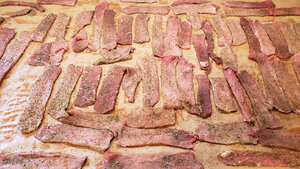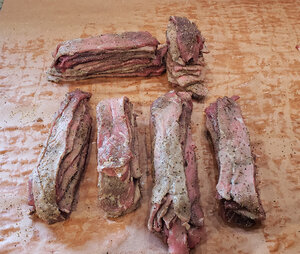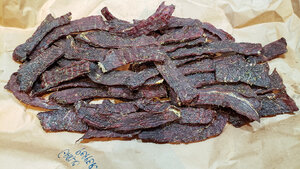In a curing brine the amount (weight) of cure #1 is based on the weight of the meat plus the weight of the water. When using a dry cure, the amount of Cure #1 is based on meat weight. The Cure #1 percentage is constant in either situation and that is 0.25% or 1.13 grams of cure #1 per pound (of meat + water, or meat only when dry curing).Hey folks, been years since I've been here. But now I have a question... it's something that seems wrong.
I read things about curing salts vs lbs of meat, for dry that makes sense, but not for wet. Here is why
It seems like the concentration is the key, not the lbs of meat. Like lets say for example, you add 1 tsp for X amount of meat in a gallon of water. If you had 10 gallons for water, that 1 tsp would be way to diluted, even if it was that same amount of meat. It seems like it should be "cure per X amount of liquid". Like a person could make up 5 gallons of liquid, with cure etc. then just 'use' as much as needed to fully cover/marinate what ever amount of meat. Whether it be 2 ounces of meat of 5 lbs of meat.
does that make sense?
Tender Quick is not interchangeable with cure #1, however earlier this year I was asked about a Dizzy Pig ham cure recipe that used Tender Quick in a curing brine. That thread is HERE.
Sugar is used to knock down the harshness of salt used in curing. It is not mandatory so you could use low percentages That said, different sugars can have different effects. Light brown sugar, dark brown sugar, white sugar, maple sugar, Turbinado sugar or Splenda are available.
Pop's Brine is what I call a universal brine, and there are some advantages of using a curing brine that is on the low end of the acceptable range of cure #1 in a gallon of water. Namely, skipping the meat + water calculation. Pop's Brine has been proven to be successful as well as safe which is a major consideration in home curing and canning.
Your question about dry curing jerky is a good one. I buy bulk jerky cure from Hi Mountain and add my own signature seasonings. Their cure is similar to Tender Quick in volume making it easier to distribute on the meat. I weigh out the amount, add my seasonings, mix then divide the amount in half. One half is sprinkled on side 1, the other half is used on side 2. The meat is stacked, wrapped in plastic and cured for 24 hours, then smoked and/or dehydrated.



Last edited:





